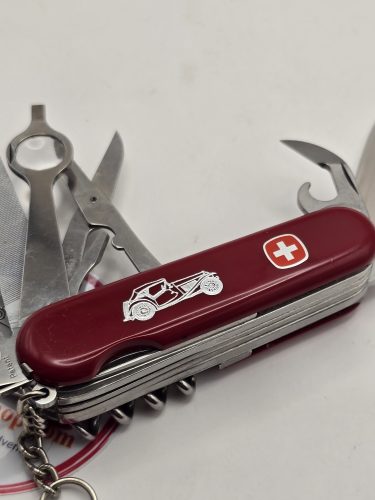Lifelong companion
It is not just because this tiny classic of industrial design is so very useful that so many of us have been so very fond of it over so many years, but it is also because we live in an increasingly throwaway world and, reassuringly, the Swiss Army knife – “guaranteed for life” – never needs replacing.
Originating in the picturesque Swiss town of Ibach, the Swiss Army knife has been a symbol of Swiss precision and ingenuity since 1891. When Karl Elsener’s company, the precursor to Victorinox, won the contract to produce the Swiss Army’s Modell 1890 knife, a legend was born.
A German Beginning
Before the Swiss Army knife became a Swiss institution, it was actually a German import. In the late 1880s, the Swiss military sought a practical pocket knife to aid soldiers in tasks like opening rations and disassembling their service rifles.
At the time, Swiss manufacturers lacked the capacity to fulfill the military’s order. So, the initial contract for 15,000 knives was awarded to the German company Wester & Co. from Solingen. These early knives, delivered in 1891 and designated Modell 1890, featured a simple yet functional design with a single blade, a reamer, a can opener, and a screwdriver.
In 1893, Paul Boéchat & Cie, the foundation of Wenger SA, joined the journey, sharing the responsibility of supplying the Swiss military with these iconic pocket tools. For over a century, these two Swiss giants operated independently, each contributing to the evolution of the Swiss Army knife.
While Wenger positioned itself as the “Genuine Swiss Army Knife,” Victorinox claimed the title of the “Original Swiss Army Knife.” The two companies coexisted, sharing the military supply contract from 1908 until Victorinox’s acquisition of Wenger in 2005.
In 2005, history was made when Victorinox acquired Wenger. This union brought together two iconic brands, solidifying the Swiss Army knife’s position as a global symbol of quality, versatility, and Swiss heritage.
Enter Stainless Steel
When Karl Elsner’s mother died in 1909, Elsener renamed his company “Victoria” in her memory. In 1921 the company started using newly invented stainless steel to make the Swiss Army Knife. Stainless steel is known as “inox”, short for the French term acier inoxydable. “Victoria” and “inox” were then combined to create the portmanteau “Victorinox“, the name still used today.

How the Swiss Army Knife Got Its Name
Ever practical, the Swiss Army knife was primarily a tool used by soldiers, which prompted the popular name in English “Swiss Army knife,” a term coined by American soldiers who had difficulty pronouncing their German name, “Schweizer Offiziersmesser,” or “Sackmesser” in the local Swiss-German dialect. To this day, each military recruit (which includes most of the male population, since the Swiss have compulsory military service for all men when they reach the age of adulthood) receives a Swiss Army knife upon beginning their service. Ironically, Victorinox, a company founded to keep Swiss soldiers from carrying German-made knives, is now the official supplier of pocket knives to the German Army.
——
You don’t need to be a professional to know that among all the multipurpose knives on the market, the Swiss army knife – SAK, for those in the know – remains a must-have. Embossed with its white cross logo, it has become a work of art and is on display in MoMA in New York, the Design Museum in London and in the Neue Sammlung in Munich.
